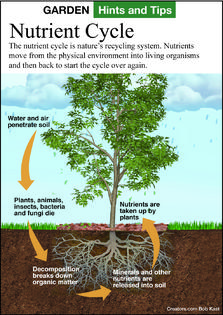The Greener View: Climate Change and Trees
Q: We have a new landscape, and we want to plant trees that will help with climate change. Any suggestions?
A: What is your definition of climate change? Do you think your area is going to get warmer or colder? What are you trying to accomplish by planting a tree? Are you planting the tree to absorb carbon or to shade the house? Will a tree block future solar panels?
Trees are a zero-sum game when it comes to holding onto carbon or reducing the amount of carbon in the atmosphere. Trees use large amounts of carbon and other elements such as hydrogen, oxygen, nitrogen, phosphorus and potassium. They use smaller amounts of copper, iron, magnesium, zinc and other elements. All of these materials are combined in many ways to make numerous chemicals for use by the plant.
Some elements and chemicals are released back into the air and water almost continuously. Others are released in large quantities on a seasonal basis, such as when leaves fall off trees in the fall. Bacteria, fungi, insects and other animals consume the leaves, flower petals, leaf bud scale, and pieces of shed bark, recycling the chemicals into their own bodies and into manure. All of this recycling is called the nutrient cycle. It is a never-ending loop of elements moving through one organism to another. Every time you eat part of a plant, you are recycling nutrients as part of this cycle.
Tree trunks, branches and large roots do hold elements and chemicals from weeks to centuries, but in the end, all of the elements in the wood will rot away as part of the nutrient cycle. Trees only hold nutrients temporarily.
In the short term, planting as many long-lived trees as you can will help store elements for a few decades. Forest trees of virtually every species live much longer than any tree planted in an urban or suburban environment. Even long-lived trees are not going to live long if they are not planted in the proper location. Before planting any tree, you will need to investigate the soil type, drainage, sun exposure, hardiness zone and wind direction. Buying trees for planting by your local forest preserve district may be a better investment than planting the same trees in your landscape.
Wherever you live, there are forest trees that are native to your region that can grow for a long time if the soil in your landscape is appropriate. You will need to maintain the tree for the first few years to make sure it starts growing well from the beginning. In addition to the climate and microclimate considerations for planting a tree, you should also consider how the tree will fit into the landscape. Trees influence their surroundings: They produce shade that can be beneficial as it lowers the need for air conditioning. They can block solar panels, not just in your landscape but in the neighbors', so be sure to take that into account.
All existing tree species have survived thousands of years of climate change. They are much heartier and more adaptable than many people give them credit for. Native woodland habitats are not static. An area full of mature trees now was an area of immature trees 100 years ago. Those mature trees have survived 100 years of record cold, heat and drought. Forest fires constantly change woodlands into fields for decades until the trees can fill the landscape again.
I don't want to discourage you from planting trees, but rather than considering "climate change" as a whole, it may be more important to take into account your short-term needs for trees.
========
Email questions to Jeff Rugg at info@greenerview.com. To find out more about Jeff Rugg and read features by other Creators Syndicate writers and cartoonists, visit the Creators Syndicate website at www.creators.com.
Copyright 2024 Jeff Rugg. Distributed By Creators.







